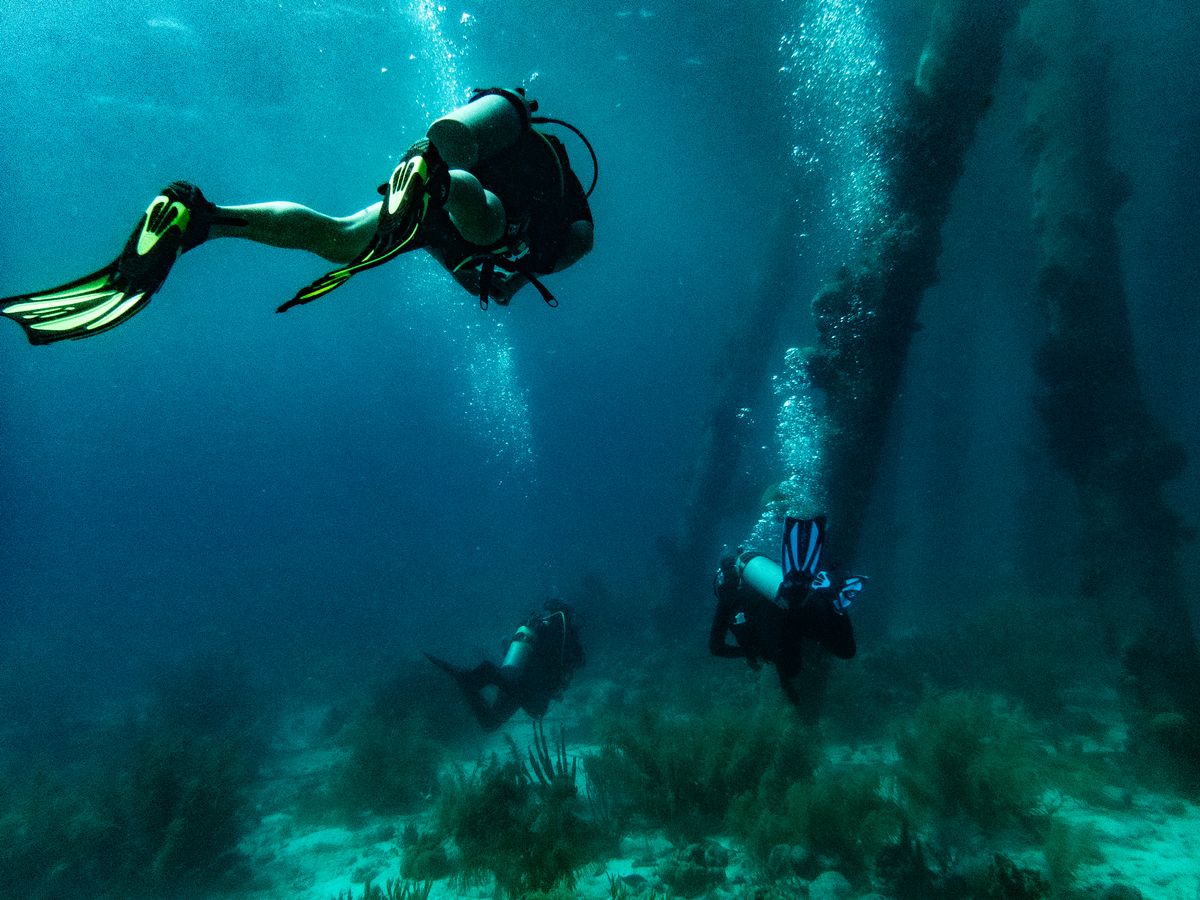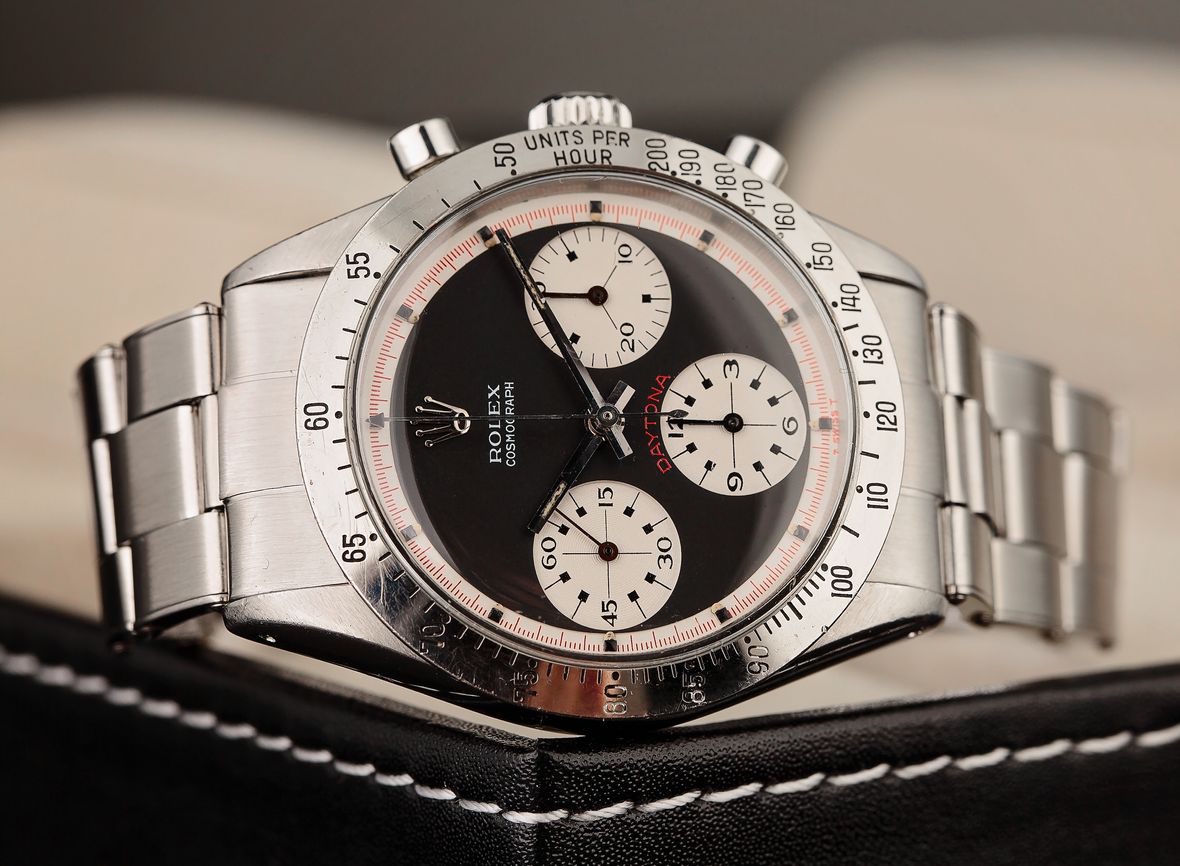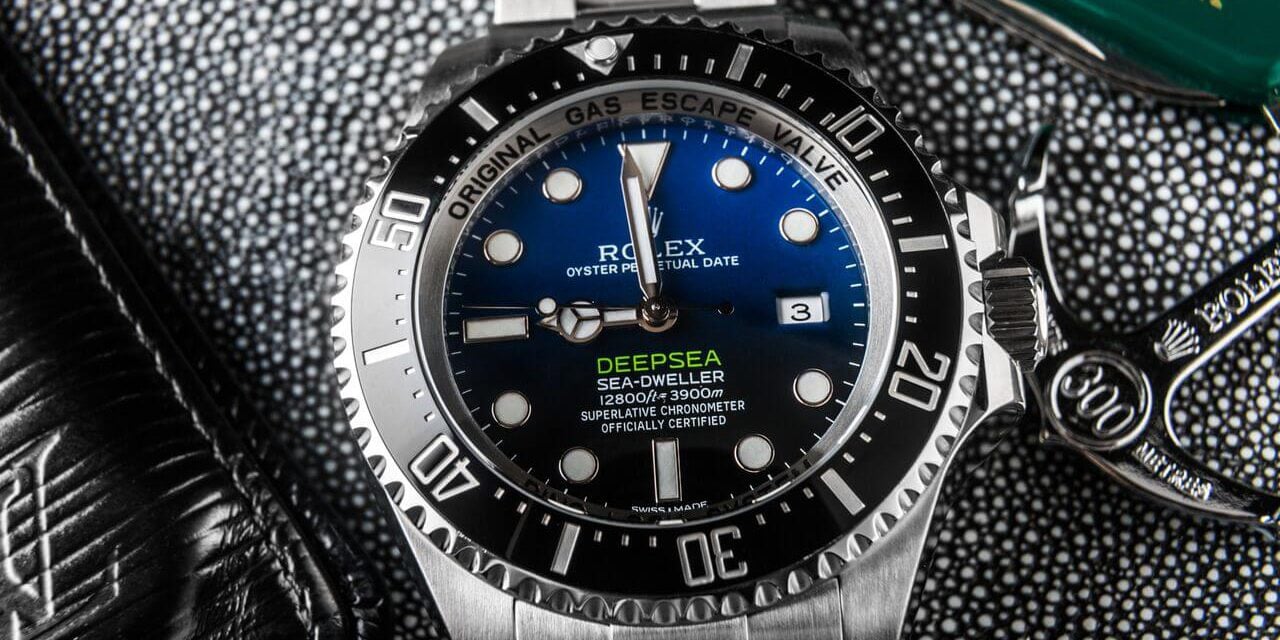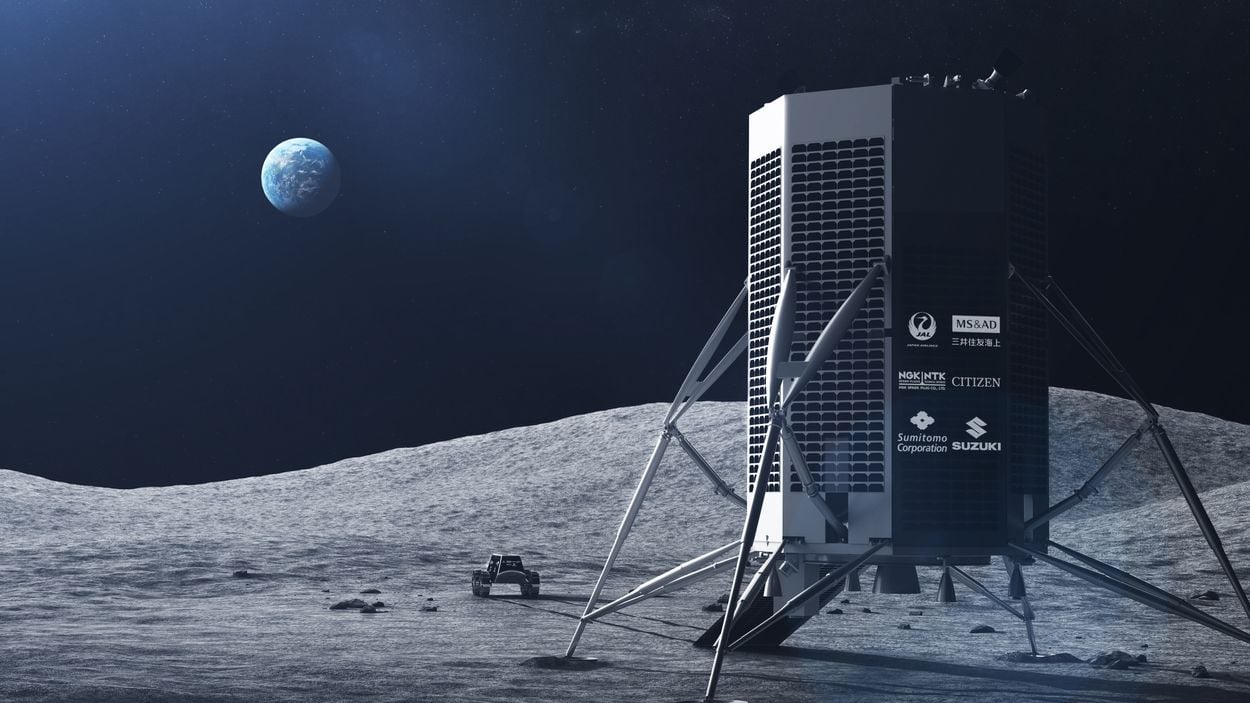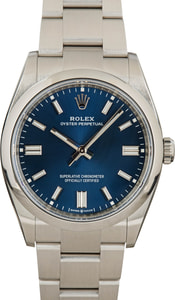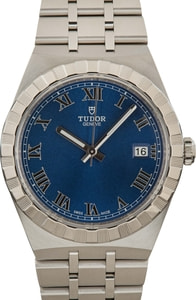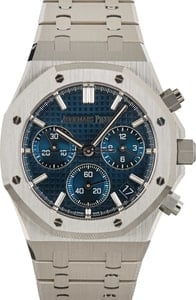After long-time rumors of a titanium Rolex watch in the works, it has finally arrived. Meet the brand new Rolex Deepsea Challenge diving watch – the very first Rolex watch with a full titanium case and bracelet construction. Oh, and its case measures a massive 50mm in diameter and it’s water-resistant to 36,090 feet (11,000 meters). There’s a lot to unpack here, so let’s get into it and uncover all the details of the freshly released Rolex Deepsea Challenge watch.
Rolex Titanium Deepsea Challenge Key Features
Reference: 126067
Case: RLX Titanium, 50mm
Bezel: Black Cerachrom, Unidirectional, 60-minute Graduated
Dial: Black, Time-Only (No-Date)
Crystal: Sapphire, 9.5mm Thick, Domed
Bracelet/Clasp: RLX Titanium Oyster Bracelet, Folding Oysterlock Safety Clasp, Glidelock Extension, Fliplock Extension
Helium Escape Valve: Yes
Caliber: 3230 Automatic Movement
Water-Resistance: 36,090 feet (11,000 meters)
Special Features: Ringlock System Architecture
Click here to learn the difference between the Rolex Submariner and the Rolex Sea-Dweller.
Rolex Deepsea Challenge Watch Backstory
In 2012, renowned filmmaker James Cameron made a journey to the deepest place on Earth. His record-breaking solo dive reached 35,787 feet (10,908 meters) below sea level, in the Challenger Deep at the bottom of the Mariana Trench.
For this extreme underwater expedition, Rolex created the experimental Deepsea Challenge watch, which was strapped to a robot arm on the hull of Cameron’s submersible. That special-designed diving watch was built to withstand the immense pressures found at such depths, rated to 49,200 feet (15,000 meters) deep and resistant to 17 tonnes of pressure on the crystal. Its case measured 51.4mm wide and 28.5mm tall, while the sapphire crystal clocked in at 14.3mm thick.
Ten years later, Rolex has now announced the catalog-ready version of that experimental timepiece: the Deepsea Challenge ref. 126067. It was announced by James Cameron, no less.
Deepsea Challenge Ref. 126067
Designed to withstand extreme pressure, the Rolex Deepsea Challenge Ref. 126067 is crafted from a grade 5 titanium alloy the company calls RLX titanium. One of titanium’s biggest benefits is that it’s a lightweight material; as such, the ref. 126067 is 30% lighter than the 2012 prototype despite its 50mm case diameter. Rolex also slimmed down the sapphire crystal, which is now a more wearable 9.5mm thick.
Let’s just pause on the fact that Rolex made a 50mm watch. That’s just wild; the biggest serially-produced watches from the brand prior to today measured 44mm (the Sea-Dweller Deepsea and the Yacht-Master II) – so the leap to 50mm is a dramatic one. Plus, let’s not forget that before 2007, Rolex men’s watches were exclusively in the 36mm to 40mm range.
As Rolex’s most extreme commercially produced diving watch to date, the Deepsea Challenge Ref. 126067 features all the bells and whistles of the saturation divers that came before it. For instance, there’s the helium escape valve to properly manage decompression by automatically expelling built-up gasses in the watch. Then there’s the Ringlock system, characterized by a nitrogen-alloyed steel ring inside the case that serves to protect the case from the immense pressure found at the bottom of the ocean. Furthermore, there’s the Triplock screw-down crown with three sealed zones to keep the water out.
On paper, the Deepsea Challenge is water-resistant to 36,090 feet (11,000 meters). However, this being Rolex, the company went a step further. Rolex teamed up with longtime partners, Compagnie Maritime d’Expertises (yes, that Comex), to develop an ultra-high-pressure tank that pressure-tested the watch to 45,112 feet (13,750 meters) deep.
In short, the new Rolex Deepsea Challenge ref. 126067 is the most pressure-resistant watch ever made.
Unlike the other Deepsea watches in Rolex’s collection, the Deepsea Challenge does not include a date window, resulting in a beautifully clean and symmetrical dial. The rest of the details are traditional to all modern Rolex divers including the Mercedes-style hands, lume-filled hour markers, and Chromalight luminescence. Powering the watch is the new-generation Caliber 3230 with 70 hours of power reserve and a chronometric precision rating of –2 /+2 seconds per day. Other familiar design traits include the black unidirectional Cerachrom bezel marked to 60-minutes and the Glidelock and the Fliplock extension systems on the titanium Oyster bracelet.
How Rolex Got Here
Since the release of the waterproof Oyster case in 1926, Rolex has remained focused on water-resistant watches, making more capable waterproof models throughout the years.
- 1926: Introduction of the Oyster case which had its bezel, caseback, and winding crown screwed down against the middle case to create a hermetic seal
- 1953: Introduction of the Submariner dive watch rated to 330 feet (100 meters) deep
- 1967: Introduction of the Sea-Dweller saturation dive watch, complete with a helium escape valve rated to 2,000 feet (610 meters) deep
- 2008: Introduction of the Deepsea extreme dive watch, featuring the Ringlock system and rated to 12,800 feet (3,900 meters deep)
- 2022: Introduction of the Deepsea Challenge watch, rated to an unprecedented 36,090 feet (11,000 meters) deep
The caseback of the new Deepsea Challenge watch is engraved with “Mariana Trench,” in addition to the dates “23-01-1960” and “26-03-2012.” This inscription pays tribute to Rolex’s role in two historic dives. The first was Jacques Piccard and Don Walsh’s expedition to the Challenger Deep in a submersible called the Trieste, accompanied by the Rolex Deep Sea Special prototype watch. The other of course was James Cameron’s solo descent in the Deepsea Challenger submersible, accompanied by the experimental Deepsea Challenge watch that inspired today’s release.
Will we soon see other titanium Rolex watches? Maybe. But perhaps RLX titanium will be exclusive to the Deepsea Challenge collection, much like Rolesium is exclusive to the Yacht-Master collection. After all, it makes sense that Rolex would pick an ultra-light material like titanium to craft its biggest watch to date.
